Does Gravity Gravitate?
The title question of this article is one that often comes up in PF threads, and I would like to give my take on it. This will be the first of several posts on this subject.
Short answer: mu. (The terms of the question are not well-defined, so it doesn’t have a well-defined answer.)
Somewhat less short answer: Yes and no. (It depends on how you define the terms “gravity” and “gravitate”. There are possible definitions that lead to each answer.)
Ok, enough fun. ;) Let’s look into this in more detail. We’ll start with the “no” answer.
The fundamental equation of GR is the Einstein Field Equation, which looks like this:
[tex]G_{ab} = 8 \pi T_{ab}[/tex]
Conceptually, what this equation says is ” “spacetime curvature = constant * stress-energy”. So the LHS of the equation is “gravity”, conceptually, and the RHS is the “source” that produces it. The key point here is that the RHS does not include any stress-energy due to gravity itself. That’s because there isn’t any; the “source” in the EFE does not include any “energy stored in the gravitational field”, because there is no coordinate-free way of defining any such energy, and the EFE is a coordinate-free, tensor equation.
But how did we come up with this equation, you ask? There are a number of ways to derive it (Misner, Thorne, and Wheeler list six of them), but the most direct is the way first derived by David Hilbert in 1915, at the same time that Einstein was completing his derivation (by a different route). We start with a simple action for gravity:
[tex]S_{G} = \frac{1}{16 \pi} \int d^4 x \sqrt{-g} R[/tex]
where [itex]R[/itex] is the Ricci curvature scalar and [itex]g[/itex] is the determinant of the metric tensor. By the principle of least action, the variation of the action with respect to the metric must be zero, and this gives an “equation of motion” for the physical system described by the action. Varying [itex]S_{G}[/itex] with respect to the metric leads directly to the vacuum Einstein Field Equation (i.e., the EFE with the RHS equal to zero). So if gravity is the only “field” present (we’ll come back to what “field” means in a bit), the Einstein tensor (the LHS of the EFE) completely describes the dynamics of the system.
What if there are other “fields” present? We need to know the action for those fields (which are usually called “matter” fields, even though they can include things like electromagnetic radiation that are not normally thought of as “matter”). Call that action (including all other “fields” besides gravity) [itex]S_{M}[/itex]. Then the variation of the total action [itex]S = S_{G} + S_{M}[/itex] with respect to the metric must be zero by the principle of least action; and this leads directly to the full EFE, with a tensor on the RHS, obtained by varying [itex]S_{M}[/itex] with respect to the metric, that we call the “stress-energy tensor”.
So we have a simple explanation for our “no” answer to “does gravity gravitate”: the RHS of the EFE does not include any stress-energy due to gravity because it comes from varying [itex]S_{M}[/itex], not [itex]S_{G}[/itex]. But why do we divide the action up in that particular way? There are actually a couple of answers to that, and here’s where it gets interesting, because one of those answers (the one I’ll give in a moment) confirms the “no” answer to our question, while the other (which I’ll give a bit later on) suggests a “yes” answer. So it’s not too surprising that PF threads tend to go on and on when this topic comes up. ;)
The first answer to why we divide up the action the way we do is simple. If we take the covariant divergence of both sides of the EFE, we get zero:
[tex]\nabla^a G_{ab} = \nabla^a T_{ab} = 0[/tex]
For the LHS, the Einstein tensor [itex]G_{ab}[/itex], this is a geometric identity called the Bianchi identity. It therefore also holds for the stress-energy tensor [itex]T_{ab}[/itex] on the RHS because of the EFE. Physically, [itex]\nabla^a T_{ab} = 0[/itex] means that the “source” of gravity, stress-energy, is conserved: it is neither created nor destroyed in any infinitesimal volume of spacetime. This is the most fundamental GR version of energy-momentum conservation, and it is a highly desirable property for the stress-energy tensor to have. But it only holds if we write the EFE the way we did above, with the SET only containing “fields” other than gravity; and that requires that we split the action up the way we did, into a part [itex]S_{G}[/itex] that only includes gravity, and a part [itex]S_{M}[/itex] that only includes fields other than gravity.
So we write the EFE the way we do in order to ensure automatic conservation of the “source”, and that way of writing the EFE requires the “source” to only include fields other than gravity. That, as noted above, seems to reinforce the “no” answer to the question. But there’s still something we haven’t talked about: where did the action [itex]S_{G}[/itex] come from in the first place?
Hilbert’s answer (and Einstein’s, when he saw Hilbert’s work) was basically that the action [itex]S_{G}[/itex] is the simplest possible action for gravity that is not trivial. However, in the late 1950’s and early 1960s, a different approach was developed, based on trying to treat gravity as “just another quantum field”, like the electromagnetic field and all the other fields that were then being studied. I won’t go into too much detail about this, but the upshot was that the quantum field theory of a massless, spin-two field on a flat spacetime background, when made self-consistent, turns out to have as its classical limit the Einstein-Hilbert action [itex]S_{G}[/itex]! (The “massless, spin-two” part comes from the fact that only a massless field can give rise to a long-range interaction, which gravity is, and only a spin-two field can give rise to an interaction which is always attractive *and* couples to all the other known “matter” fields.)
In other words, on the “gravity as just another quantum field” view, classical GR is just a low-energy effective field theory; it is what you get when gravity is too weak for its quantum nature to show up. (Don’t be misled by that “too weak”, btw; in the sense of the term used here, gravity is “too weak” at, and well inside, the horizon of a stellar-mass black hole.) This means that the way we wrote the action, and hence the EFE, above is just the natural way to write the classical limit of a theory with gravity present along with other fields.
But here’s the punch line: as a massless, spin-two field, gravity not only couples to all the other “matter” fields; it also couples to *itself*. Its field equation, both in the quantum version *and* in its classical limit, the EFE, is nonlinear. At the quantum level, this means gravitons (the quantum particles associated with the massless, spin-two field) interact with other gravitons. At the classical level, it means that, since the EFE is nonlinear, the curvature can be present even when the “source” on the RHS of the EFE is zero, i.e., there can be vacuum solutions of the EFE that have curvature present. (Schwarzschild spacetime is an obvious example.) In other words, on this view, the answer to our question is “yes”: gravity *does* gravitate!
It’s important to note that there is no contradiction between the two answers we have just described. “Gravity” in the two answers means two different things: gravity as a massless, spin-two field (either quantum or classical) does gravitate (the field interacts with itself), but gravity as a tensor satisfying the Bianchi identity doesn’t gravitate, because there is nothing “leftover”, once the Bianchi identity is satisfied, to contribute to the source on the RHS of the EFE.
To sum up what we’ve said so far: we’ve talked about two possible ways to answer our title question, and they lead to opposite answers:
(1) In order to ensure the conservation of the source, the complete Einstein tensor, including *all* contributions from gravity, must appear on the LHS of the EFE; there is nothing left over to contribute to the “source” on the RHS of the EFE. So in this sense, gravity does *not* gravitate.
(2) Viewed as a quantum field, gravity is a massless, spin-two field, and the classical limit of the quantum theory of such a field is standard GR (based on the Einstein-Hilbert action for gravity). But this field interacts with itself; its field equation, at both the quantum and classical levels, is nonlinear. So in this sense, gravity *does* gravitate.
However, there is still more to come; we haven’t even talked about the issues that usually give rise to our title question. We’ll look into some of those in the next post in this series.
- Completed Educational Background: MIT Master’s
- Favorite Area of Science: Relativity

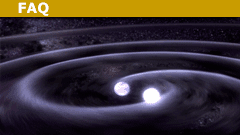
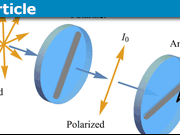
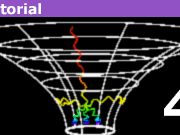
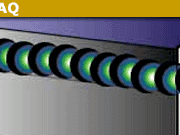
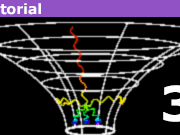
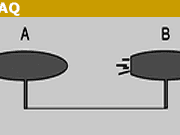

“I’m afraid you have not made a case for a “No” answer.”
My case for the “no” answer was based on putting a particular interpretation on the words “does gravity gravitate?”, which is different from the interpretation you are implicitly putting on them here. See below.
“why should (1) and (2) but not (3) be self-interacting?”
I agree that (3) is self-interacting; that’s the “yes” answer. If you interpret “does gravity gravitate?” as meaning “is the field describing gravity self-interacting”, the answer is “yes”. The article says that.
The “no” answer is based on interpreting “does gravity gravitate?” as “does the RHS of the EFE include gravity?” The answer to that is “no”.
In other words, the answer to the question “does gravity gravitate?” depends on how you translate that ordinary language question into physics. Once the translation is done, there is no dispute at all about the physics.
I’m afraid you have not made a case for a “No” answer. We know of well defined mathematical criteria for self-interacting fields which works both classically and quantum mechanically: a field theory is said to be self-interacting if, in the absence of sources, the fields satisfy non-linear (can be coupled) second order partial differential equations. And this applies to all self-interacting theories known to us:
(1) In the [itex]Phi^{4}[/itex] theory, we have [itex]partial_{mu}(partial^{mu}Phi ) sim – lambda Phi (Phi^{2})[/itex].
(2) For Yang-mills field, you have [itex]partial_{nu}F_{a}^{nu}{}_{mu} = – f_{abc}A^{nu}_{b} (F_{c nu mu})[/itex].
And (3) in free space, the gravitational field satisfies [itex]partial_{nu}(sqrt{-g}G^{nu}{}_{mu}) = – (1/2)partial_{mu}g^{nu rho} (sqrt{-g} G_{nu rho})[/itex].
So, why should (1) and (2) but not (3) be self-interacting?
“a follow-up Insights article”
The follow-up article is now visible here:
[URL]https://www.physicsforums.com/insights/gravity-gravitate-part-2-sequel/#toggle-id-1[/URL]
“How to explain, that moon is a little lighter because of its gravitational energy?”
I have a follow-up Insights article that should appear shortly that goes into this. You are right that the Einstein equation can be used to explain it.
“Does ∫d4x mean that the integrand (√−g) R is being integrated over all of the 4D spacetime?”
Yes.
How to explain, that moon is a little lighter because of its gravitational energy? It is understandable that Einstein equation is enough for explaining this.
Intriguing!
I have a question about the notation in the following equation:SG = (1/16π) ∫d4x (√−g) R.Does ∫d4x mean that the integrand (√−g) R is being integrated over all of the 4D spacetime?
Nice article, Peter!